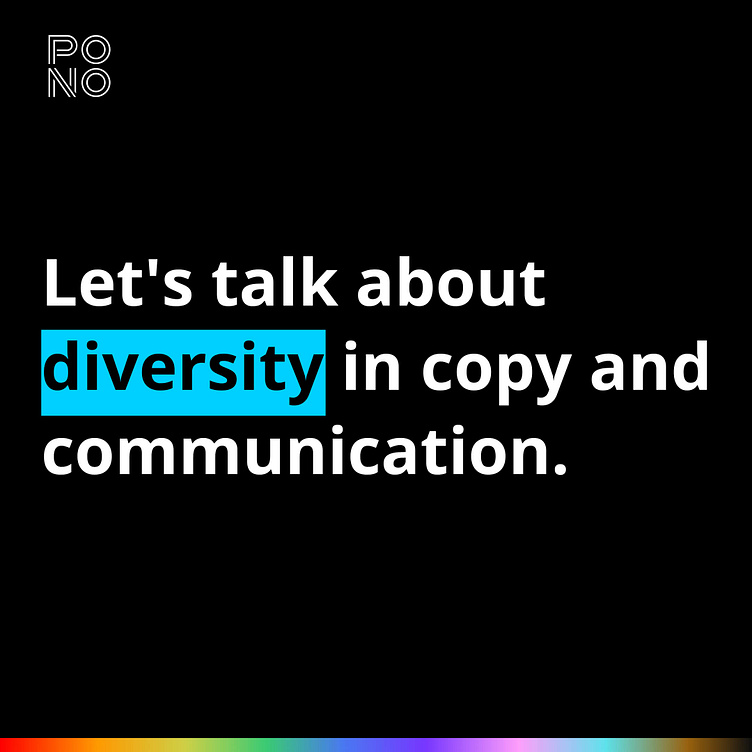Diversity in Copy & Communication
Let's talk about diversity in copy and communication.
Continuing our discussion on diversity, equity, and inclusion (DE&I) in creative work, let’s talk about copy. Thoughtful and intentional word choice takes constant effort, a desire to never stop learning, and—maybe most importantly—a willingness to change.
We aren’t the authority on DE&I, just a group of creatives with our own experiences that we want to share while we learn from others. Here are a few things we’ve been thinking and learning about recently:
• Do not assume someone’s gender or sexuality. If a person’s desired pronoun is unknown, use gender-neutral pronouns (they/them/their).
• White is not the default. If you note the race of one individual, you would do the same for all others mentioned.
• Consider how a screen reader will interpret your copy. For example, capitalizing each individual word in a hashtag helps a screen reader to recite each word separately. #AccessibleHashtag
• Use inclusive and accessible language and symbols that will serve the diverse range of people who will view and engage with your communications.
To learn more, check out the DE&I Guide we made for creatives that includes resources from GLAAD, National Center on Disability and Journalism, and Conscious Style Guide.
#DiversityEquityInclusion #DEI #Accessibility #CopywritingForCreatives #InclusiveCopywriting #DesignStudio #CreativeAgency
Thoughtful and intentional word choice takes constant effort, a desire to never stop learning, and a willingness to change.
The following slides offer ways we can be mindful of our verbal and written choices.
1: Do not assume someone's gender or sexuality. If a person's desired pronoun is unknown, use gender-neutral pronouns (they/them/their).
Accompanied by a photo of someone holding up a small white board with writing in rainbow colors that reads: "Hello my pronouns are" with fill-in-the-blank spaces below. Image source: Alexander Grey: unsplash.com
2: White is not the default. If you note the race of one individual, you would do the same for all others mentioned.
Accompanied by an image of a person of colors face that is made up of 6 different faces. Image source: RyanJLane: iStock.com
3: Consider how a screen reader will interpret your copy. For example, capitalizing each individual word in a hashtag helps a screen reader to recite each word separately. #AccessibleHashtag
Accompanied by an image of a person with their eyes closed, holding their smart phone up near their ear.
4: Use inclusive and accessible language and symbols that will serve the diverse range of people who will view and engage with your communications.
Accompanied by an image of "All-Gender Restrooms" with different inclusive visuals and language.
An image of the cover of Pono’s Diversity, Equity, & Inclusion Guide with text that reads, “Check out our Diversity, Equity, & Inclusion Guide for the creative industry to learn more: www.pono.design/dei”






